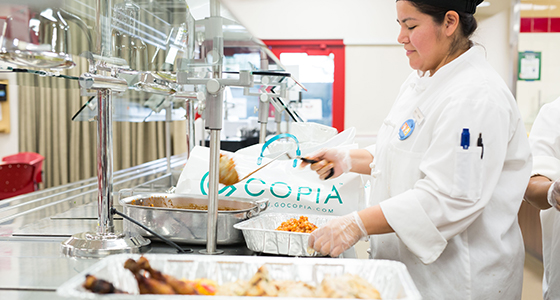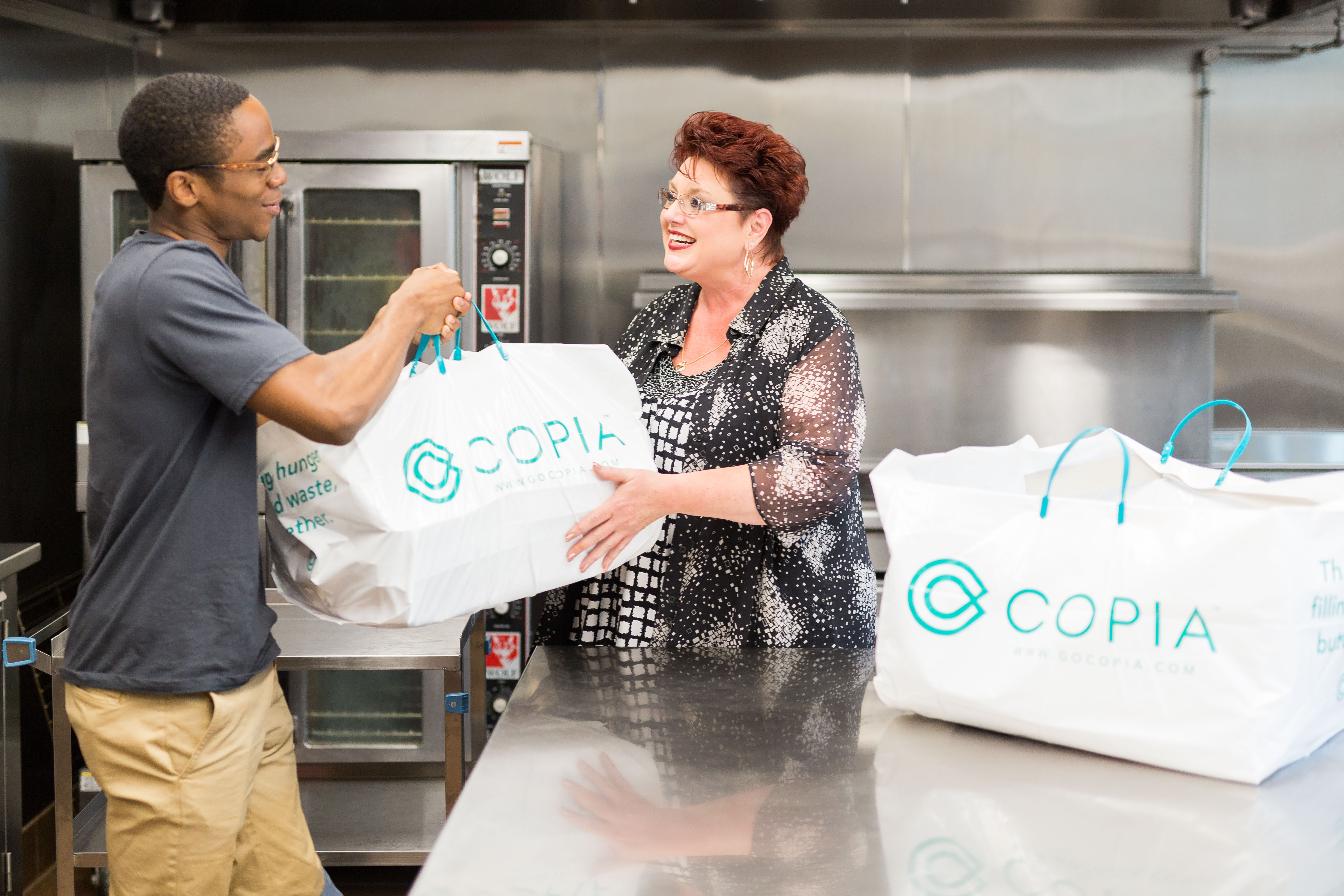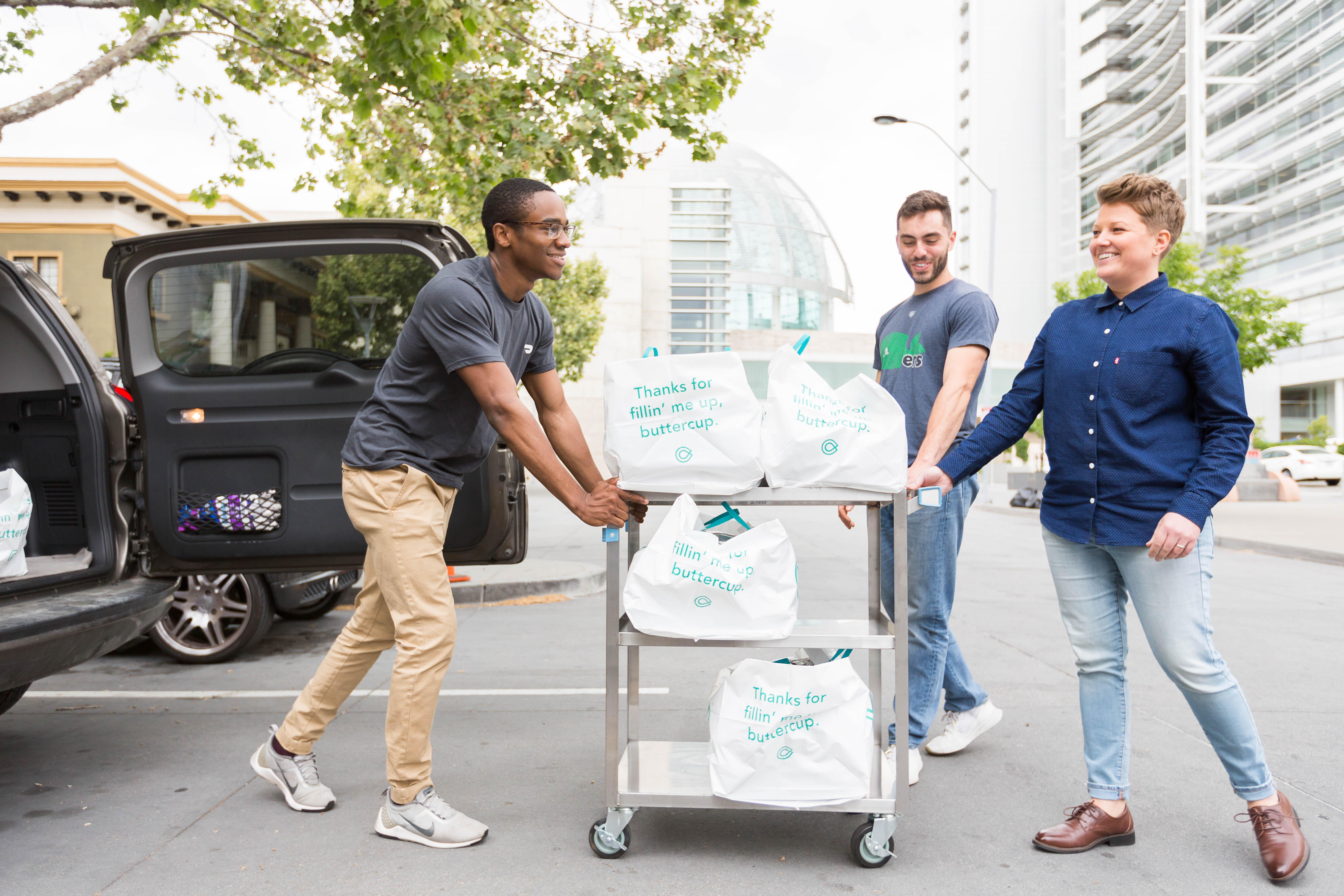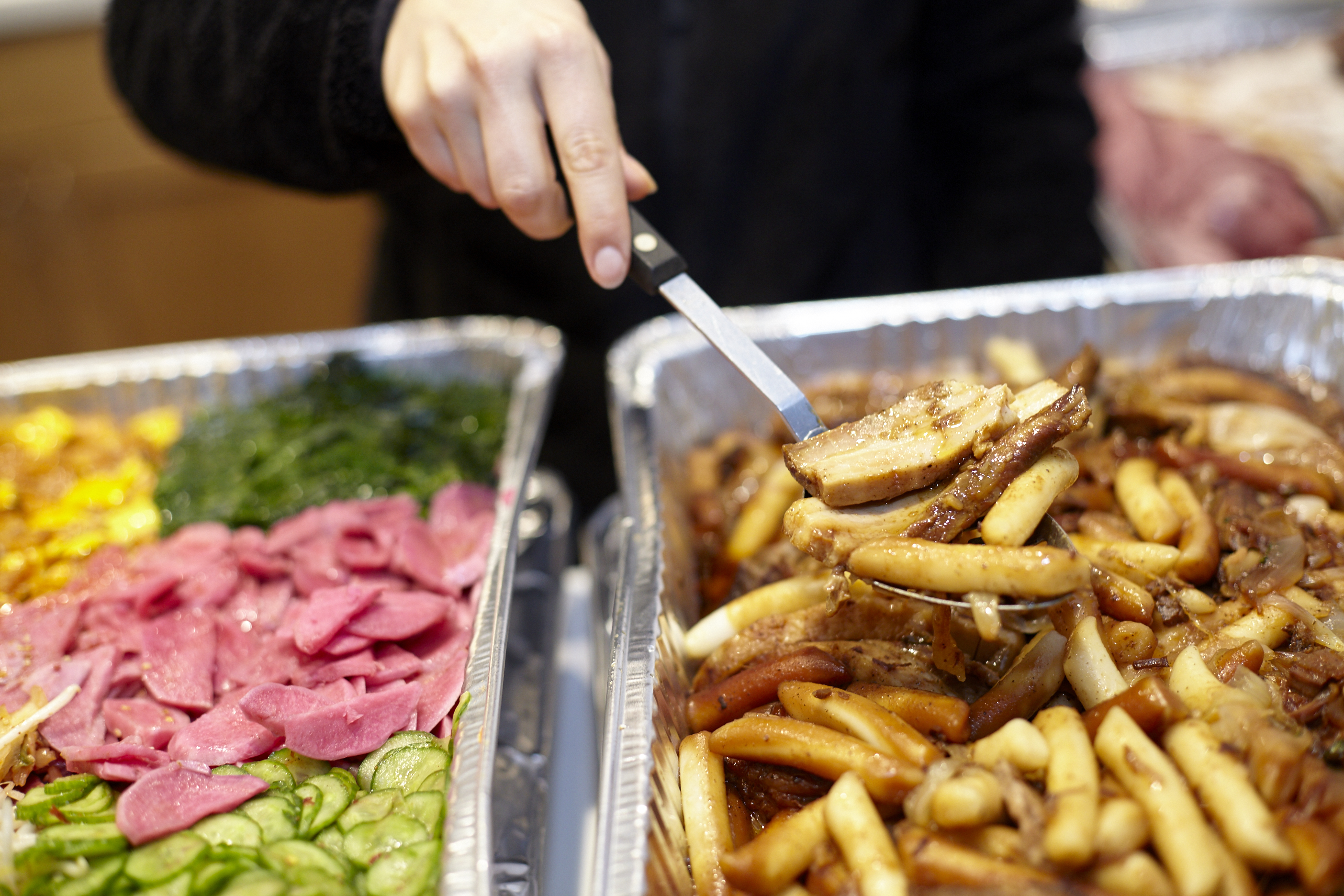Benefits of food waste reduction add up for Sutter Health
 Hospital kitchen staff transfers surplus food to Copia donation trays.
Hospital kitchen staff transfers surplus food to Copia donation trays.
When you donate surplus food to nonprofits, everyone wins
Jack Breezee, Sutter Health Valley Area regional director of food and nutrition services, is driven by the numbers – he’s eager to discover just how much food waste can be avoided and how much unused edible food can be redirected to those who need it. Sutter Health’s Valley Area region facilities in California are embarking on an innovative food waste prevention and rescue pilot.
The project aims to divert approximately 672,000 pounds of food waste from landfill disposal over the 18-month grant period and will contract with Copia, a food recovery company, to track, rescue and transport edible food to organizations serving food-insecure people in the hospitals’ communities.

Door dasher picks up food at the hospital kitchen
“We’re going to to be able to show the numbers: the food that we rescued and where that food has gone to help hungry people in our communities,” says Breezee. “We get to show the results to our staff, ‘look we rescued 200 pounds of food, and it went to the women’s shelter here in Sacramento.’ I think that is going to be really powerful.”
Up to 40% of the food in the United States is never eaten, yet one in eight Americans struggles to put enough food on the table. Experts have projected that reducing food losses by just 15% would provide enough food for more than 25 million Americans every year.
“In our hospitals and in my heart, what drives me is the food rescue piece. I know that we waste food, and it is disconcerting to know that food could go to people who need it,” says Breezee.
The Sutter Health Valley region, which spans eight counties, includes 10 acute care hospitals. These hospitals care for 389,090 patients annually, and serve 20,000 staff and volunteers through cafeterias and catering events as well as visitors. This pilot is part of a comprehensive sustainability program at Sutter Health, a Practice Greenhealth member, designed to foster healthier environments in the more than 100 Northern California communities that the system serves.

Door dasher brings the food to organizations serving food-insecure people in the hospitals’ communities.
Food staff at Sutter Health facilities will be weighing and tracking all of their food waste from preproduction to leftover foods. The leftover, edible food will be logged and donated to area nonprofits in need of food.
This project is facilitated by Health Care Without Harm’s California Healthy Food in Health Care program and funded by a grant from the Department of Resources Recycling and Recovery (CalRecycle) through California Climate Investments, a statewide initiative that puts billions of cap-and-trade dollars to work reducing greenhouse gas emissions, strengthening the economy, and improving public health and the environment – particularly for priority populations.
A recent ReFed report states that wasted food accounts for approximately 20% of land, water, and fertilizer use and 8% of global greenhouse gas emissions, and is the single largest material type in landfills. In the landfill, food and other organic waste decompose and generate methane, a potent greenhouse gas that contributes to climate change.
California SB 1383 was signed into law in 2016 and sets organic waste reduction and edible food recovery targets that will be enforced for hospitals in 2024. The legislation mandates that there is a 75% reduction in organic waste disposal and that 20% of currently disposed edible food is recovered for human consumption by 2025.

The community organization serves rescued food to hungry community members.
“Not only does this project impact greenhouse gases from keeping food waste out of the landfill, which is what CalRecycle cares about,” explains Breezee, “it is also about dollars saved, which is important to hospital administrators, and then there is the food rescue piece which is what is really important to our community.”
Another number Breezee is watching, is the bottom line.
“Everything that we throw away, I see dollar signs, like when we overproduce or take half the head of lettuce off when we are cleaning lettuce versus just taking the outer leaves off,” he says.
Practice Greenhealth did the math. Reducing food waste has the potential to save facilities money. Hospitals, on average, spend $0.06 to $0.10 per pound for waste removal. A typical 200-bed community hospital might generate 65 tons of food waste annually at a cost of .06 per pound of disposal is $7,800. LeanPath, a business that helps customers reduce food waste and improve efficiency, found that its customers have typically reduced their pre-consumer food waste by 50% or more, which results in a 2-6% savings on annual food purchases.
Sutter worked with Copia to look at each and every food type, organizing the food into 16 categories. They reviewed their grocery numbers and averaged out waste for fruits and vegetables, meats, dry goods, and attached a cost to all of those. They will be weighing the food and will be able to see not only how much food was diverted but also how much money was saved. Breezee looks forward to sharing the final price tag with the health system’s staff and leadership.
“I have always found in my career that if you can answer the question ‘why we are doing something,’ it makes it so much easier to get their commitment to participate,” he says. “So those pounds and dollars are going to be the big ‘why’ we are working on this food waste reduction process.”
Hospitals are in a unique position to reduce their climate impact and address food insecurity in their service areas. The U.S. health care sector is responsible for nearly 10% of the country’s greenhouse gas emissions, and U.S. hospitals generate one-third of those emissions. It is estimated that food comprises 10 to 15% of an average hospital’s waste.
For more information about the project, please contact the project manager.
